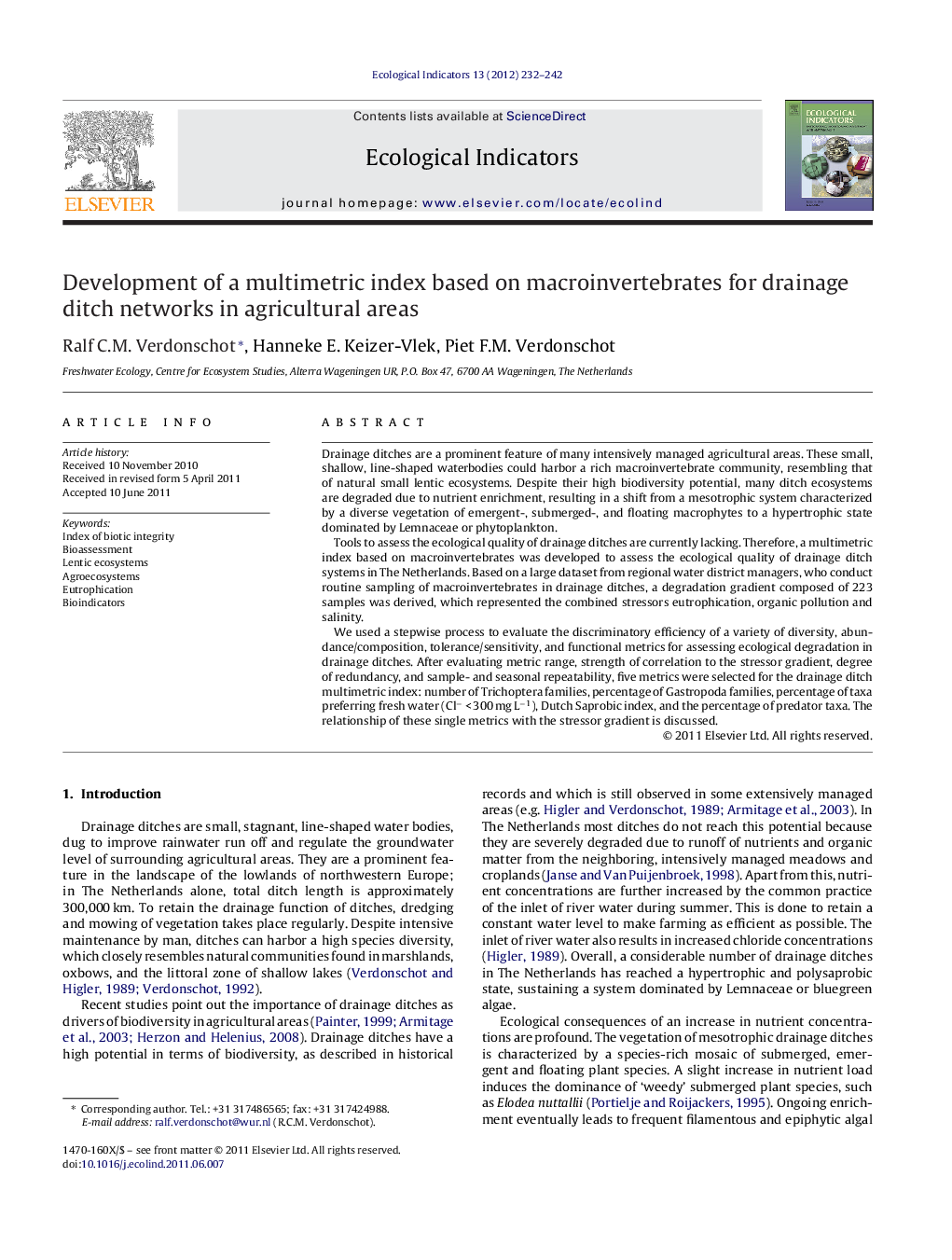| Article ID | Journal | Published Year | Pages | File Type |
|---|---|---|---|---|
| 4374018 | Ecological Indicators | 2012 | 11 Pages |
Drainage ditches are a prominent feature of many intensively managed agricultural areas. These small, shallow, line-shaped waterbodies could harbor a rich macroinvertebrate community, resembling that of natural small lentic ecosystems. Despite their high biodiversity potential, many ditch ecosystems are degraded due to nutrient enrichment, resulting in a shift from a mesotrophic system characterized by a diverse vegetation of emergent-, submerged-, and floating macrophytes to a hypertrophic state dominated by Lemnaceae or phytoplankton.Tools to assess the ecological quality of drainage ditches are currently lacking. Therefore, a multimetric index based on macroinvertebrates was developed to assess the ecological quality of drainage ditch systems in The Netherlands. Based on a large dataset from regional water district managers, who conduct routine sampling of macroinvertebrates in drainage ditches, a degradation gradient composed of 223 samples was derived, which represented the combined stressors eutrophication, organic pollution and salinity.We used a stepwise process to evaluate the discriminatory efficiency of a variety of diversity, abundance/composition, tolerance/sensitivity, and functional metrics for assessing ecological degradation in drainage ditches. After evaluating metric range, strength of correlation to the stressor gradient, degree of redundancy, and sample- and seasonal repeatability, five metrics were selected for the drainage ditch multimetric index: number of Trichoptera families, percentage of Gastropoda families, percentage of taxa preferring fresh water (Cl− < 300 mg L−1), Dutch Saprobic index, and the percentage of predator taxa. The relationship of these single metrics with the stressor gradient is discussed.
